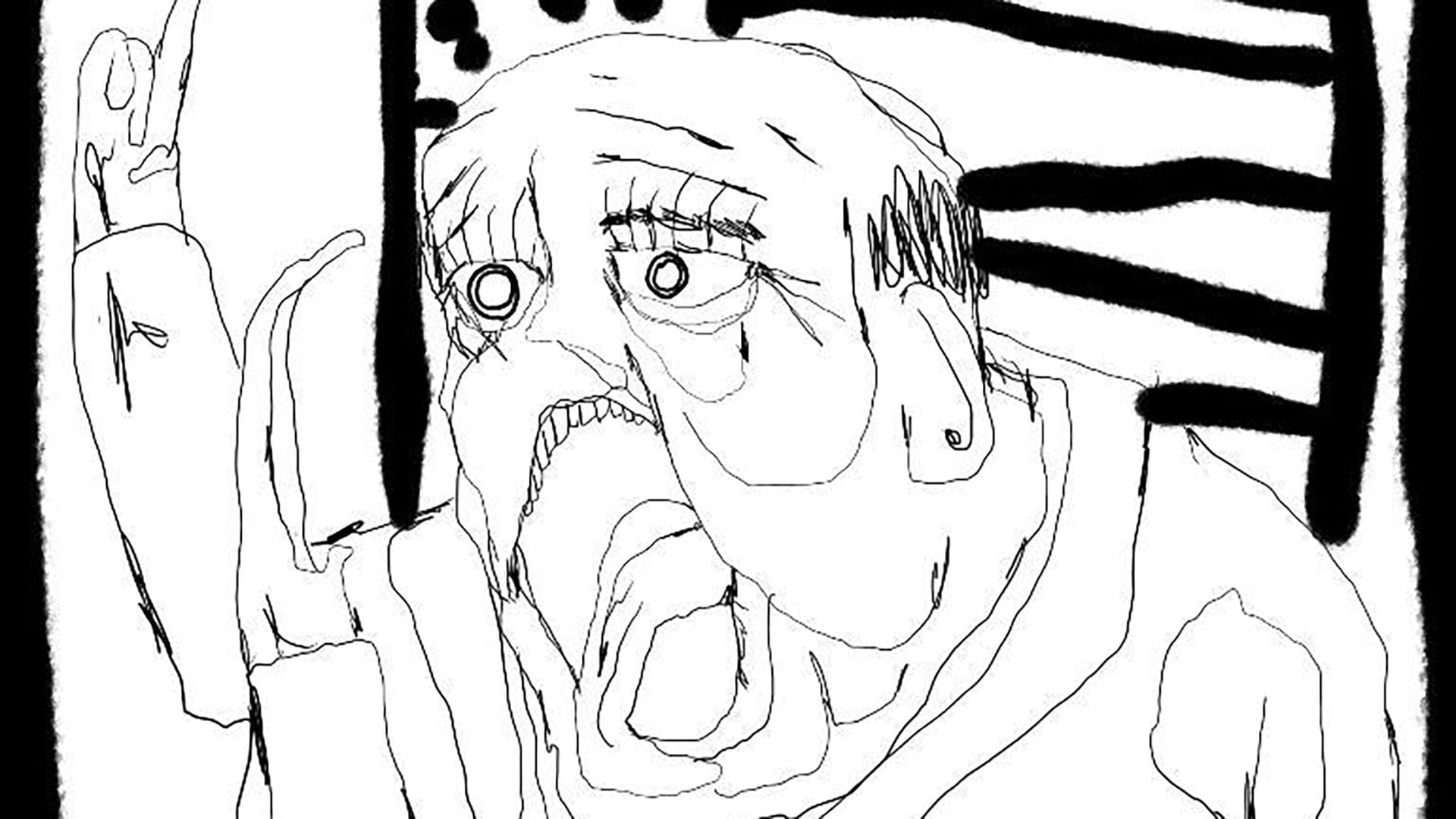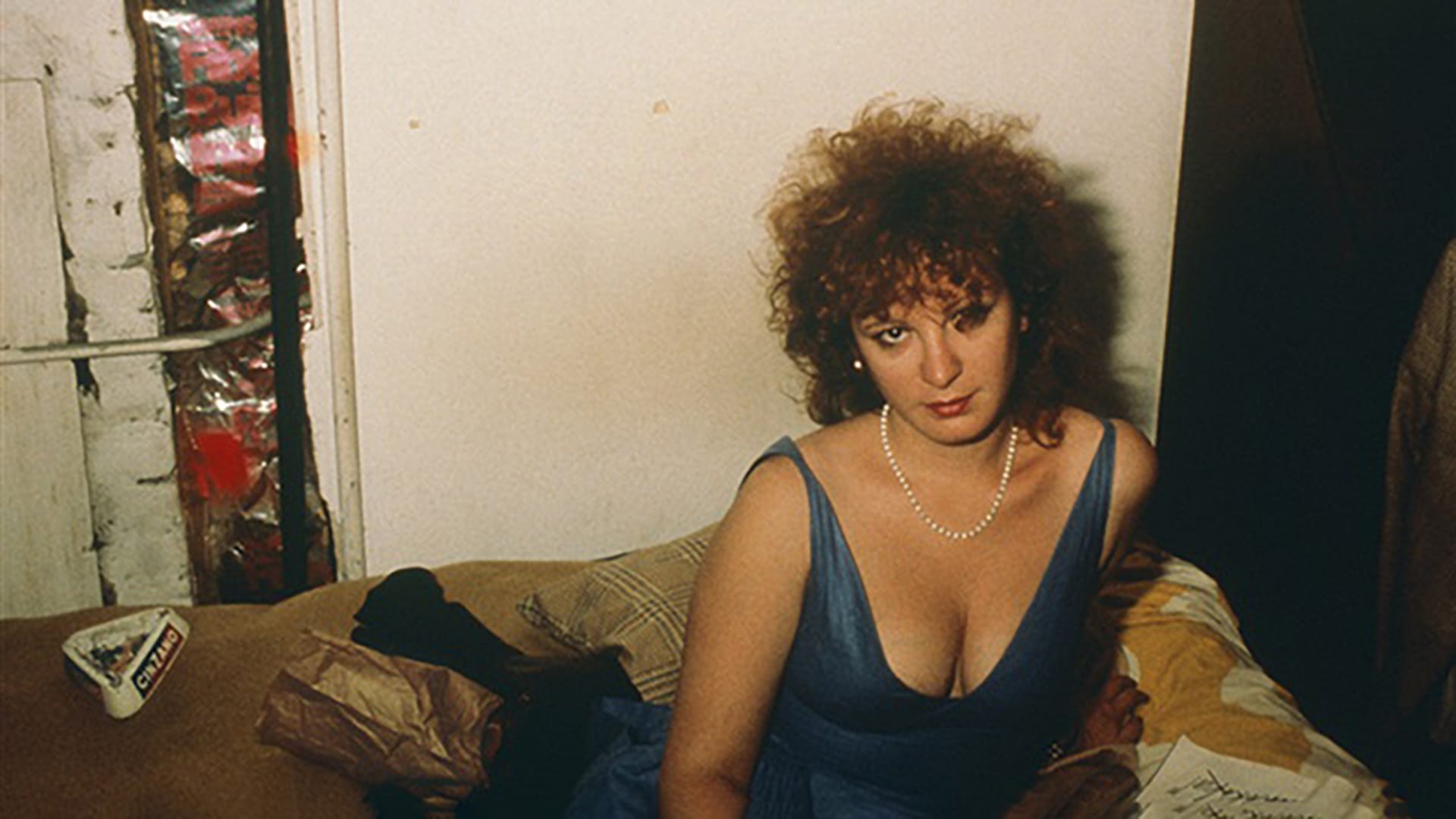
Nan Goldin’s Vivid Chronicle of Life, Love, and Activism
Nan Goldin’s photography, marked by its raw intimacy and emotional depth, is inseparable from her life experiences. Born in Washington D.C. in 1953, Goldin grew up in a middle-class Jewish family in the suburbs of Boston. Her early life was shadowed by familial tensions and the tragic suicide of her older sister, Barbara, when Goldin was just 11 years old. This loss profoundly impacted Goldin and set the stage for her lifelong exploration of complex human emotions and relationships through her lens.
Goldin’s teenage years were a period of rebellion and discovery. She left home in her early teens, living in various foster homes. This period of flux and instability further honed her sensitivity to the fringes of society and the nuanced struggles of individuals. At 16, she enrolled at the Satya Community School in Lincoln, where she was first introduced to the camera. This tool became her means of capturing and cherishing relationships, a cathartic way to process her sister’s death and her own turbulent experiences.
Her early influences were eclectic and revealing. Goldin was drawn to the candid and avant-garde expressions in Andy Warhol’s early films, the works of Federico Fellini, and the aesthetics of French and Italian Vogue. The photography of Guy Bourdin and Helmut Newton, with their stark and evocative imagery, also left a lasting impression on her artistic development.
In 1973, Goldin held her first solo show in Boston, featuring photographs from her forays into the city’s gay and transgender communities. These early works display Goldin’s profound empathy and respect for her subjects, a trait that would become a hallmark of her career. Unlike many of her contemporaries, Goldin did not view these communities as subjects to be analyzed or exposed; rather, she saw them as vibrant individuals deserving of dignity and representation.
Goldin’s time living with drag queens in Boston during her late teens was particularly influential. She was not just an observer but an active participant in their lives, which allowed her to capture images of incredible intimacy and authenticity. These experiences cemented her belief in the power of photography as both a personal and political tool – a means to document silenced issues and marginalized communities.
During her time at the School of the Museum of Fine Arts in Boston, where she graduated in 1977/1978, Goldin honed her technique and aesthetic. Her work during this period, characterized by its vivid Cibachrome prints, is associated with the emergent Boston School of Photography.
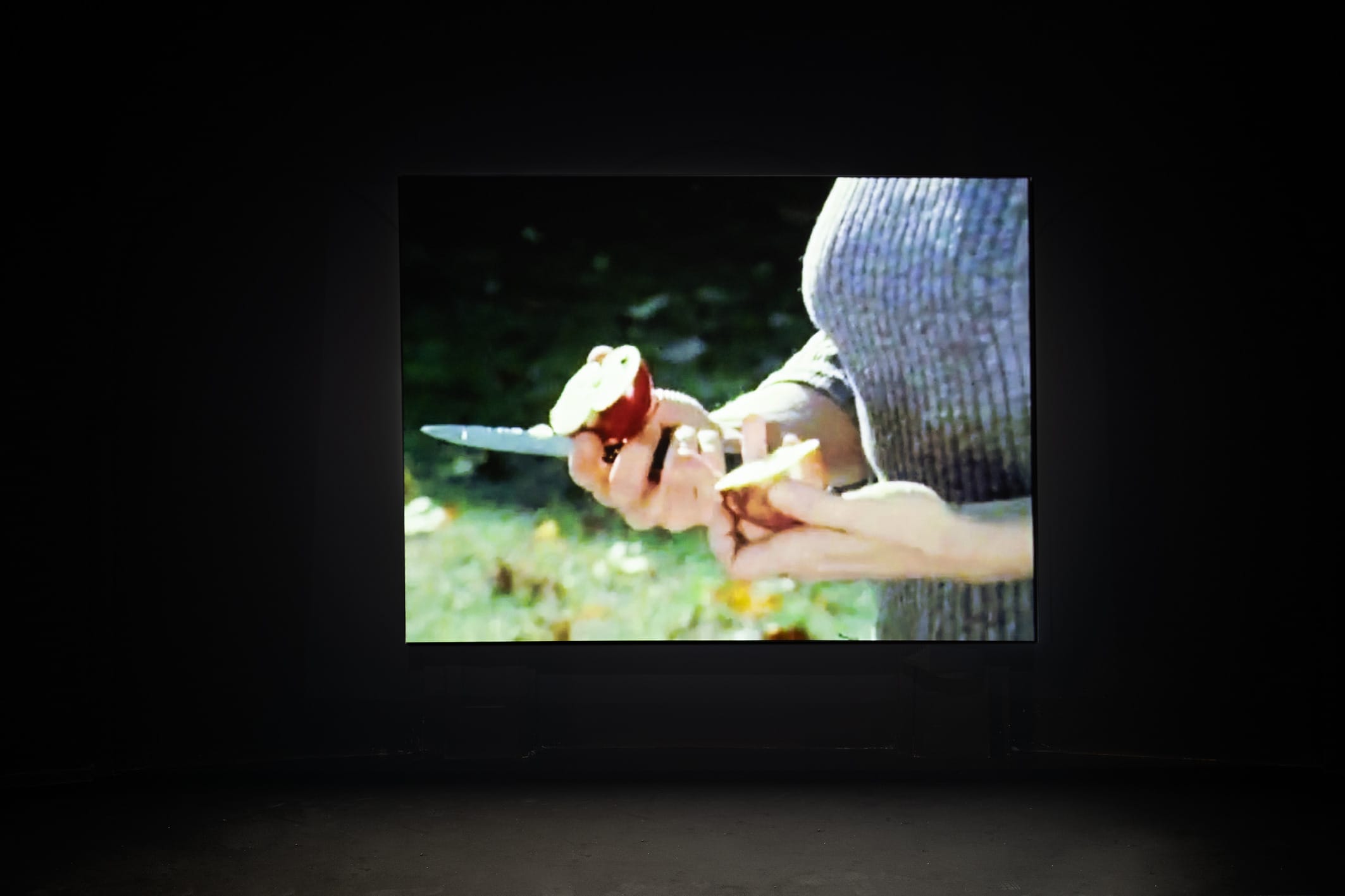
Inside the Lens: The Aesthetic and Ethos of Nan Goldin’s Photography
Nan Goldin’s photographic approach is distinguished by its unfiltered authenticity and emotional rawness. Her images, often described as snapshots, transcend mere documentation to become poignant narratives of human experience. This chapter delves into the aesthetic and philosophical underpinnings of Goldin’s work, revealing how her unique perspective shapes her artistry.
Goldin’s aesthetic is deeply personal, infused with the essence of her life experiences. Her photographs do not seek to glorify or embellish but to present life as it is – in all its beauty, chaos, and complexity. This candid portrayal is achieved through her engagement with her subjects, who are often her friends and companions. The trust and intimacy she fosters with them allow her to capture moments of unguarded emotion and vulnerability, from scenes of tender affection to the rawness of grief and despair.
The core of Goldin’s ethos lies in her relationship with her subjects. Unlike traditional documentary photography, which often maintains a detached perspective, Goldin’s work is immersive. She is not an outsider looking in but a participant sharing in the experiences she captures. This approach reflects her belief in the camera as an extension of her own experience, a tool to express her empathy and connection with her subjects.
Goldin’s work also challenges societal norms and confronts taboo subjects. Her frank depiction of sexuality, gender identity, and subcultural lifestyles has been groundbreaking. In her seminal work “The Ballad of Sexual Dependency” (1986), she documents the post-Stonewall gay subculture, along with intimate moments from her life and those of her friends. The images in this slideshow/book are raw and unapologetic, capturing the ecstasy and agony of relationships, the struggle with addiction, and the specter of AIDS.
Her color palette, often characterized by its vivid and sometimes harsh lighting, adds a sense of immediacy and intensity to her images. The use of available light, rather than staged illumination, contributes to the sense of authenticity that pervades her work. Goldin’s photographs are as much about the emotions they evoke as the stories they tell. The blurs, grain, and imperfections in her images are not flaws but integral elements that add to their emotional depth.
Goldin’s refusal to conform to traditional photographic techniques or aesthetics has been both criticized and celebrated. By elevating snapshot photography to the realm of fine art, she has challenged the boundaries of the medium. Her work is a testament to the power of photography not just as a means of representation but as a form of personal and political expression.
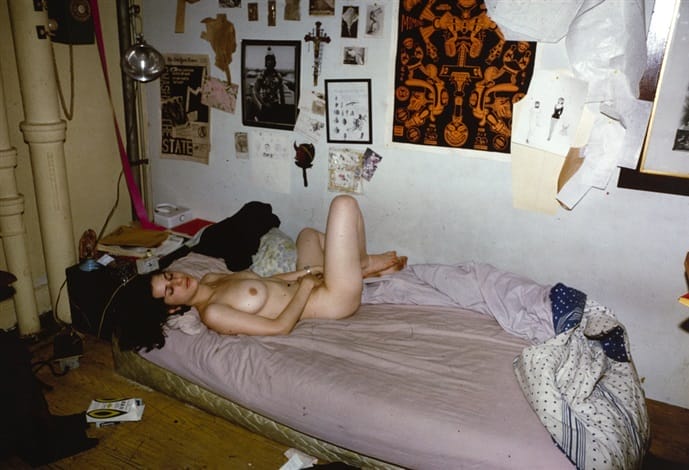
Chronicles of Vulnerability: “The Ballad of Sexual Dependency” and Beyond
Nan Goldin’s “The Ballad of Sexual Dependency,” a seminal work in the canon of contemporary photography, marks a pivotal point in her career. This chapter explores the significance of this work and its impact on Goldin’s subsequent projects, underscoring her relentless pursuit of emotional truth through her lens.
“The Ballad of Sexual Dependency,” created in the 1980s, is a deeply personal visual diary, chronicling the lives of Goldin and her circle of friends in New York City. This slideshow of over 700 color photographs, accompanied by a music soundtrack, is more than a documentary; it’s a raw and unfiltered narrative of love, sexuality, and survival in the face of adversity. The Ballad captures moments of intense joy and deep sorrow, revealing the complexities of relationships and the human condition.
The portrayal of her friends by Goldin a diverse group that included artists, musicians, drag queens, and others living on the fringes of society broke new ground in its candid treatment of subjects often marginalized or ignored by mainstream culture. The work is unflinching in its depiction of drug use, domestic violence, and the impact of the AIDS crisis, which claimed the lives of many in her community. These photographs are not just images; they are testimonies to the lives of those who, for Goldin, were family.
The impact of “The Ballad of Sexual Dependency” extended far beyond the art world. It challenged societal norms and opened up conversations about issues that were often hidden or stigmatized. Goldin’s work became synonymous with a form of visual activism, giving voice to the voiceless and visibility to the invisible.
Following “The Ballad,” Goldin continued to explore similar themes in her work but with evolving perspectives. In series such as “The Other Side” and “All By Myself,” she further delved into the lives of drag queens and her personal experiences, including her struggles with addiction. These works continued to reflect her commitment to authenticity and her belief in the power of photography to express complex emotional realities.
Goldin’s later projects, such as “Sisters, Saints, and Sibyls,” expanded her scope to include multimedia installations and video, offering new dimensions to her narrative style. This work, which explores the tragic story of her sister’s suicide, combines personal photographs with text and video, creating a poignant meditation on loss, memory, and familial bonds.

Transcending the Margins: Celebrating Subcultures and Diversity
Nan Goldin’s photography is a powerful testament to the beauty and complexity of subcultures and marginalized communities. This chapter examines how Goldin’s work transcends societal margins, offering an unflinching and empathetic portrayal of diverse lifestyles and identities.
Early immersion in the vibrant drag queen community of Boston in the 1970s was a formative experience that shaped Goldin’s approach to photography. Images from this period are not just depictions of a subculture but are imbued with a profound sense of respect and admiration. She saw drag queens not merely as subjects but as muses and friends, capturing their lives with an intimacy and authenticity that was virtually unheard of at the time. Her work from this era challenges conventional gender norms and celebrates the fluidity and diversity of sexual and gender identities.
In the 1980s, Goldin moved to New York City, where she became an integral part of the city’s post-punk and post-Stonewall gay subcultures. Her work from this period, especially in “The Ballad of Sexual Dependency,” documents the lives of her friends and acquaintances, many of whom were involved in these subcultures. Goldin’s images from the Bowery’s hard-drug scene are particularly striking, capturing a world that was often harsh and unforgiving. Yet, even in these settings, Goldin’s photographs are filled with humanity and compassion, highlighting the resilience and dignity of her subjects.
Goldin’s approach to these subcultures was always one of immersion rather than observation. Her photographs are not the work of an outsider looking in but of someone deeply embedded within these communities. This insider perspective allowed her to capture moments of vulnerability and strength that might be invisible or inaccessible to a more detached observer. Goldin’s work thus becomes a form of visual advocacy, bringing attention and dignity to lifestyles and identities that mainstream society often overlooks or misunderstands.
Throughout her career, Goldin has continued to explore and document various subcultures, always with the same empathetic eye. Whether photographing drag performers, the LGBT community, drug users, or others living on society’s fringes, her work challenges viewers to confront their prejudices and assumptions. Goldin’s photography not only documents these communities but also celebrates their complexity and resilience.
In addition to her work in the United States, Goldin’s international travels have allowed her to engage with and portray diverse cultures and communities around the world. These experiences have enriched her perspective, further emphasizing the universality of themes such as love, loss, and belonging that are central to her work.
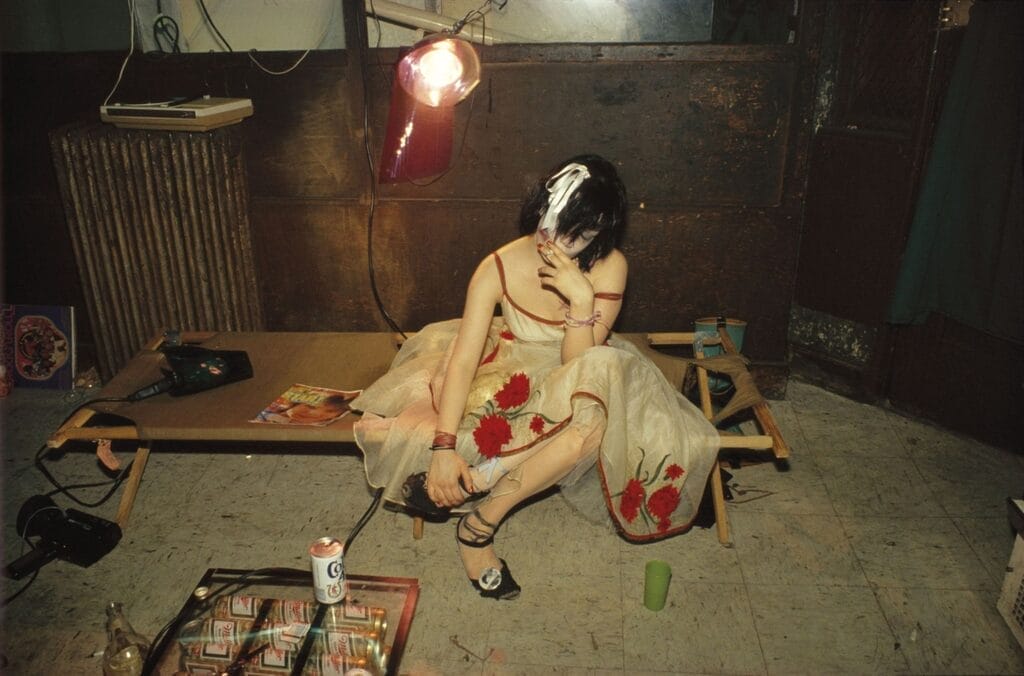
Tragedy and Triumph: The Impact of the AIDS Crisis on Goldin’s Work
The AIDS crisis of the 1980s and 1990s was a turning point in Nan Goldin’s career, profoundly impacting her work and the communities she was part of. This chapter delves into how this tragedy influenced her photography, showcasing her ability to capture both the devastating impact of the epidemic and the resilience of those affected.
Being deeply embedded in the New York City art and LGBTQ+ communities during this period placed Goldin at the epicenter of the AIDS crisis. Many of her friends and subjects were among the first to be affected by the disease, which at the time was little understood and heavily stigmatized. Her response to this unfolding tragedy was to do what she knew best: document the lives and deaths of those around her with honesty and compassion.
Her photographs from this era are poignant and heartbreaking, capturing the physical and emotional toll of AIDS on individuals and communities. One of her most iconic images, “Cookie and Vittorio’s Wedding,” is a bittersweet testament to love in the face of mortality, depicting the wedding of her friends Cookie Mueller and Vittorio Scarpati, both of whom later died of AIDS-related complications. This image, like many in her work from this period, is a powerful reminder of the fragility of life and the enduring strength of human connections.
Goldin’s work during the AIDS crisis also serves as a form of activism, bringing visibility to the suffering and injustice faced by those affected. At a time when mainstream media often ignored or misrepresented the epidemic, Goldin’s photographs provided a stark counter-narrative. They not only chronicled the devastating impact of the disease but also highlighted the compassion, care, and activism that emerged within the affected communities.
The impact of the AIDS crisis on Goldin’s work extended beyond the subject matter. It brought a heightened sense of urgency and purpose to her photography. The act of documenting the lives of her friends took on a new significance, as Goldin became acutely aware of the role her images played in preserving the memories of those who were disappearing from her life. Her photography became a way to defy death and oblivion, ensuring that the stories and struggles of her friends would not be forgotten.
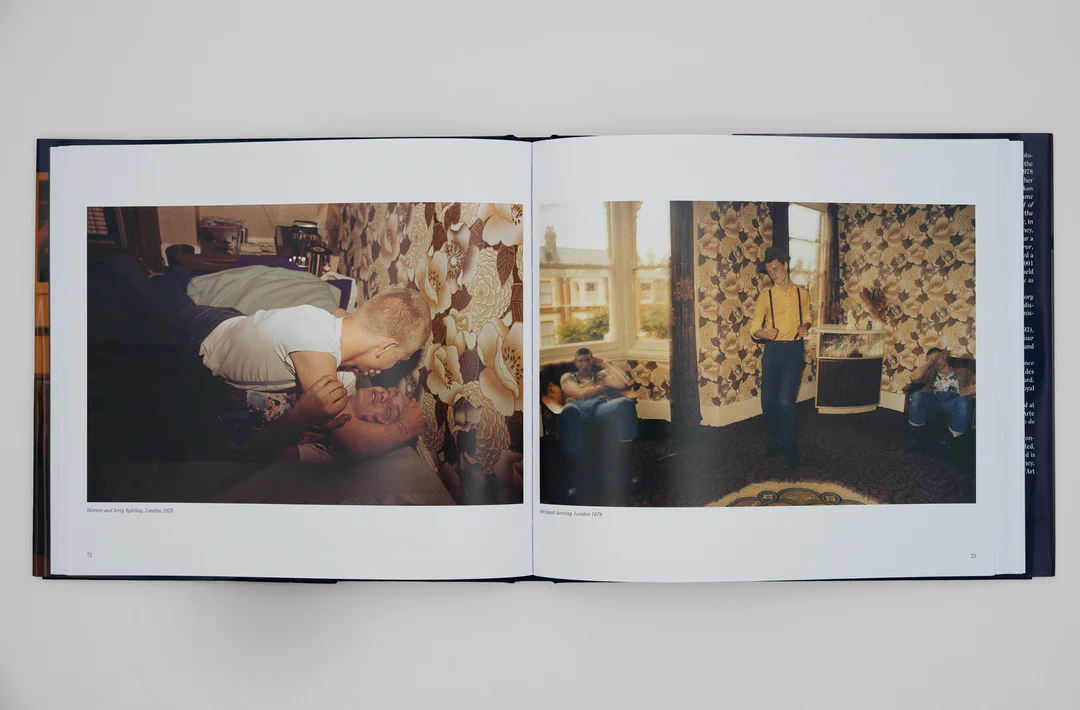
Art as Activism: The Opioid Crisis and P.A.I.N
The engagement of Nan Goldin with the opioid crisis, particularly through the founding of P.A.I.N. (Prescription Addiction Intervention Now), marks a significant evolution in her role as an artist-activist. This chapter delves into how her personal experiences with addiction led to broader activism against the pharmaceutical industry, merging her artistic sensibilities with direct political action.
The personal battle of Goldin with opioid addiction began following a surgery in 2014, when she was prescribed OxyContin. Her subsequent addiction and recovery journey profoundly affected her perspective on the opioid crisis. Recognizing the broader systemic issues at play, particularly the role of the Sackler family and their company Purdue Pharma in promoting OxyContin, she channeled her energy into activism. Established in 2017, P.A.I.N. became her vehicle for advocating change and holding those responsible accountable.
P.A.I.N.’s activism is notable for its use of art as a tool for social and political critique. Goldin and her fellow activists have staged several high-profile protests at art institutions that have accepted donations from the Sackler family. These protests often involve dramatic, performative elements and utilize Goldin’s photography to make a visceral impact. For example, in one protest at the Metropolitan Museum of Art, activists scattered mock prescription bottles in the museum’s Sackler Wing, using the space itself to draw attention to the Sacklers’ connection to the opioid crisis.
Goldin’s work with P.A.I.N. is a continuation of her long-standing commitment to addressing social issues through her art. Just as her photography has always sought to reveal hidden truths and give voice to marginalized communities, her activism with P.A.I.N. aims to expose and challenge the systems of power that contribute to societal ills. The opioid crisis, with its intersection of public health, corporate greed, and personal suffering, is a subject that naturally aligns with Goldin’s artistic and ethical concerns.
Through P.A.I.N., Goldin has also influenced the conversation around art patronage and the ethical responsibilities of cultural institutions. By highlighting the source of the Sacklers’ wealth and its connection to the opioid epidemic, P.A.I.N. has forced museums and galleries to reconsider the acceptability of certain donations, leading some institutions to refuse future donations from the Sackler family.
Goldin’s activism in the context of the opioid crisis represents a significant shift in her work. While she has always been an artist deeply engaged with the world around her, her founding of P.A.I.N. and her direct engagement with issues of corporate and social accountability mark a new phase in her career, where her art and activism become inseparably intertwined.

Evolving Visions: Recent Work and Future Directions
Nan Goldin’s recent work and evolving artistic directions reflect her enduring ability to adapt and engage with new themes and mediums while staying true to her core ethos. This chapter explores Goldin’s current projects and her future trajectory, highlighting how her work continues to evolve in response to personal experiences and global changes.
In recent years, Goldin’s focus has shifted somewhat from the intensely personal narratives that characterized her earlier work. While still deeply rooted in themes of intimacy and vulnerability, her recent projects have broadened to include more abstract explorations of human emotion and existence. This evolution is partly a response to the natural progression of her life and career, as well as her experiences with addiction and recovery.
Exploration of mental states and the human psyche in Goldin’s work has led to a more abstract and sometimes symbolic approach in her photography. This shift is evident in her recent series of images, which often feature landscapes, still lifes, and more ambiguous compositions. These works retain her signature emotional depth and intimacy but move away from the direct portraiture that defined much of her earlier career.
Another significant development in Goldin’s recent work is her increased use of multimedia and installation art. Projects like “Sisters, Saints, and Sibyls” incorporate photography, video, and text to create immersive experiences that delve into complex themes like family, memory, and loss. These installations show Goldin’s willingness to experiment with form and medium to express her artistic vision.
Activism, particularly her work with P.A.I.N., has also influenced her recent artistic output. Her experiences in the realm of social and political activism have infused her work with a new sense of urgency and relevance. This is evident in her continued focus on the opioid crisis and her use of art as a means to raise awareness and provoke change.
Looking forward, Goldin’s work is likely to continue evolving in response to her experiences and the changing world around her. Her recent interest in more abstract themes suggests a continued exploration of the less tangible aspects of human experience. At the same time, her commitment to activism indicates that her work will remain deeply engaged with social and political issues.
fakewhale
Founded in 2021, Fakewhale advocates the digital art market's evolution. Viewing NFT technology as a container for art, and leveraging the expansive scope of digital culture, Fakewhale strives to shape a new ecosystem in which art and technology become the starting point, rather than the final destination.
You may also like
Leander Herzog, Heatsink, WUF, Solo Press Showcase, Basel
“Heatsink” by Leander Herzog, solo press showcase curated by Fakewhale, at WUF Basel, Ba
6 – The Betrayal of Duke Dasher
Washington D.C., United States President Knudson sat in the custom-made chair that had been made for
Thomas Scheibitz, >>>X<<< at TICK TACK, Antwerpen
>>>X<<< by Thomas Scheibitz, curated by TICK TACK, at TICK TACK, Antwerpen, 14/02/


